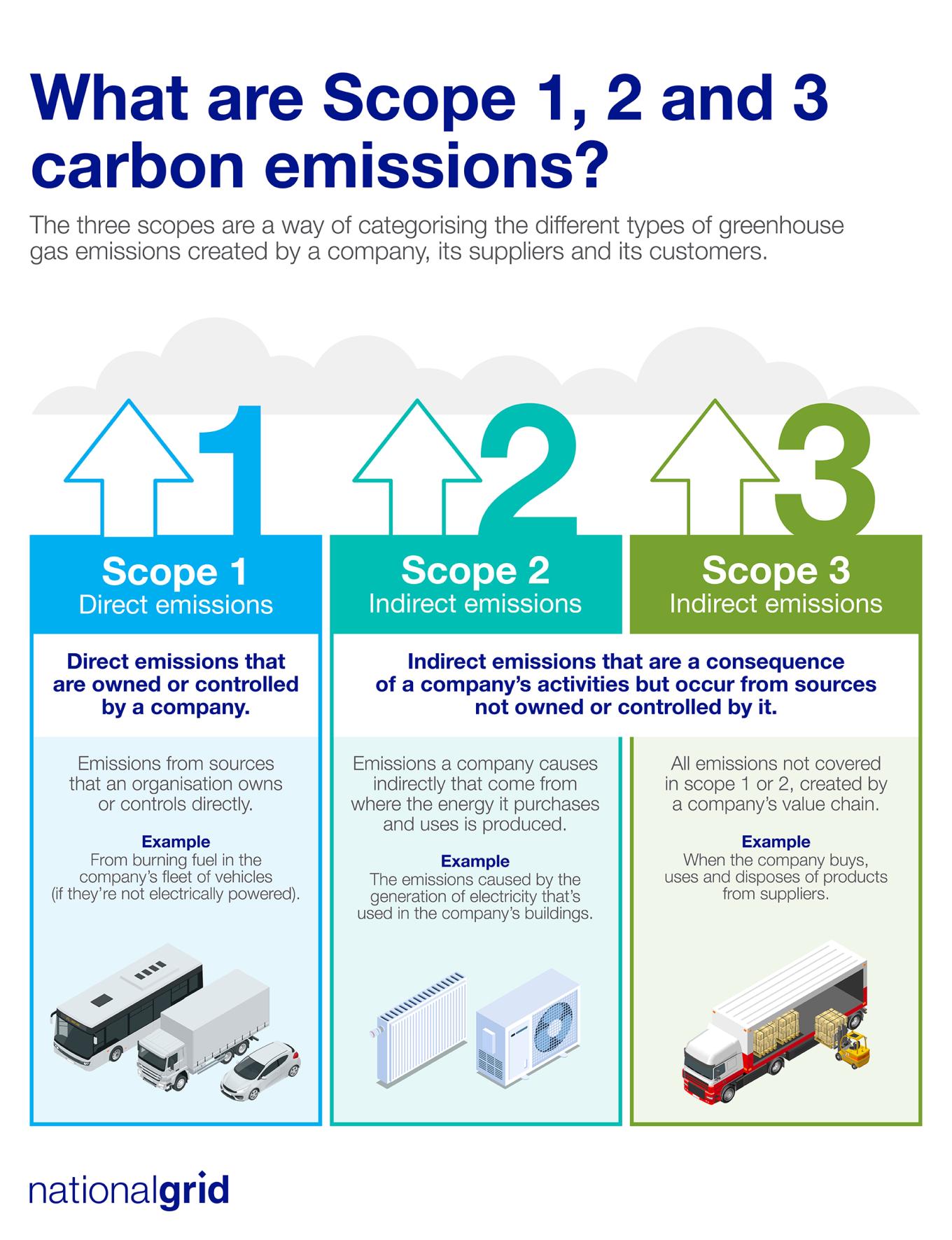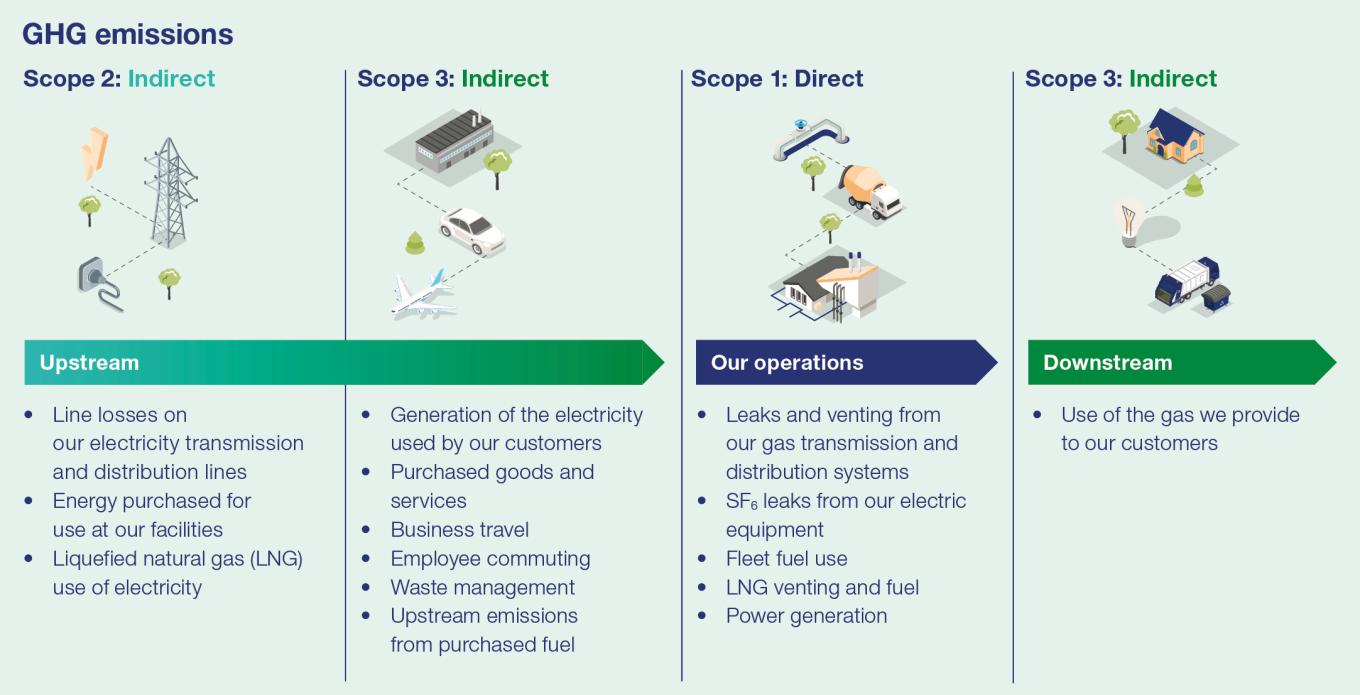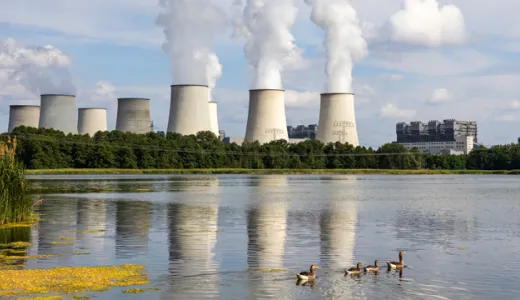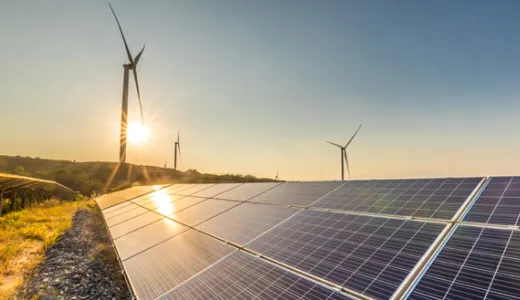What are scope 1, 2 and 3 carbon emissions?
Many companies, including National Grid, are seeking to reduce their greenhouse gas emissions. When it comes to reporting progress, you’ll often see the terminology ‘Scopes 1, 2 and 3 emissions’ used, but what do these numbers actually mean?
On the road to net zero, one of the main ways that companies’ greenhouse gas emissions are measured and assessed is to look at them within three different ‘scopes’.
Why are there three scopes of emissions?
In order to take action to reduce emissions, we need to understand and measure where they’re sourced from in the first place.
The three scopes are a way of categorising the different kinds of emissions a company creates in its own operations and in its wider ‘value chain’ (its suppliers and customers).
It’s not clear why they’re called ‘scopes’ rather than ‘groups’ or ‘types’ but the name comes from the Greenhouse Gas Protocol, which is the world’s most widely used greenhouse gas accounting standard.
As the Greenhouse Gas Protocol itself puts it: “Developing a full [greenhouse gas] emissions inventory – incorporating Scope 1, Scope 2 and Scope 3 emissions – enables companies to understand their full value chain emissions and focus their efforts on the greatest reduction opportunities”.
Definitions of scope 1, 2 and 3 emissions
Essentially, scope 1 are those direct emissions that are owned or controlled by a company, whereas scope 2 and 3 indirect emissions are a consequence of the activities of the company but occur from sources not owned or controlled by it.
Scope 1 emissions
Scope 1 covers emissions from sources that an organisation owns or controls directly – for example from burning fuel in our fleet of vehicles (if they’re not electrically-powered).
Scope 2 emissions
Scope 2 are emissions that a company causes indirectly and come from where the energy it purchases and uses is produced. For example, the emissions caused when generating the electricity that we use in our buildings would fall into this category.
Scope 3 emissions
Scope 3 encompasses emissions that are not produced by the company itself and are not the result of activities from assets owned or controlled by them, but by those that it’s indirectly responsible for up and down its value chain. An example of this is when we buy, use and dispose of products from suppliers. Scope 3 emissions include all sources not within the scope 1 and 2 boundaries.

How easy is it to reduce scope 1, 2 and 3 emissions?
There are lots of considerations beyond emissions alone – such as cost and practicality – but, to an extent, we can choose whether our fleet is low or zero emissions, we can determine how our buildings are warmed and a manufacturer can look at ways to reduce the carbon cost of its production processes.
However, a soft drinks maker can’t control how we will dispose of its plastic bottles, nor can an appliance manufacturer decree whether we use the most or least eco-friendly settings on our laundry machines.
It’s somewhat easier to quantify emissions for scopes 1 and 2. For energy use, for example, companies can source the data needed to convert direct purchases of gas and electricity into a value for the associated greenhouse gases.
However, for many organisations, scope 3 emissions account for by far the highest proportion of total emissions. Unfortunately these are also usually the hardest to reduce. Some of the actions a company can take to reduce these is to work with existing suppliers and their customers on solutions to reduce their emissions.
National Grid’s scope 1, 2 and 3 carbon emissions
This diagram shows the main sources of our scope 1,2 and 3 emissions.

Last updated: 1 Jul 2024
The information in this article is intended as a factual explainer and does not necessarily reflect National Grid's strategic direction or current business activities.



